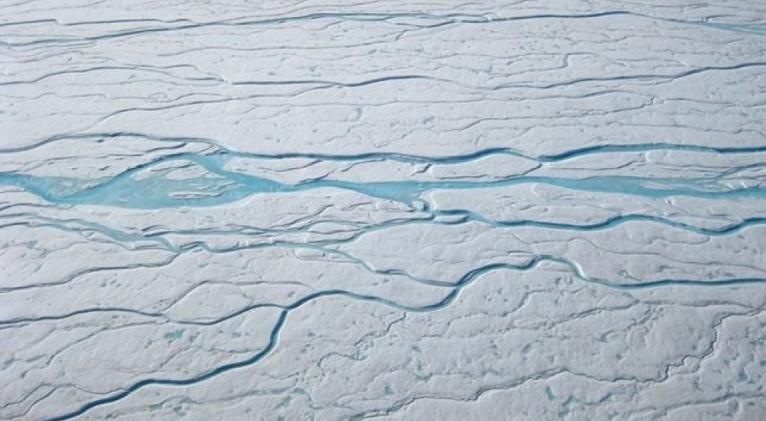Climate change altering Greenland ice sheet
especiales

The Greenland ice sheet has traditionally been pictured as a bit of a sponge for glacier melt-water, but it is rapidly losing the ability to buffer its contribution to rising sea levels, researchers said.
Researchers spent five weeks in 2013 drilling firn cores in the interior of the Greenland ice sheet. Firn is multi-year compacted snow that is not as dense as glacier ice. Instead, it forms a porous near-surface layer over the ice sheet.
They drilled a series of shallow firn cores about 20 metres deep during their time on the ice sheet.
"We were interested in the thin porous near-surface firn layer, and how its physical structure is changing rapidly with climate change," said ..
The researchers also used a radar unit to gather profiles between core sites along a 100-kilometre path from the low elevation ice sheet margin into the high elevation ice sheet interior.
They analysed the firn cores on the spot by cutting them into small sections to quantify their properties, such as their density, so they could compare them with samples collected the following year.
"The year-on-year firn changes were quite dramatic," said Colgan.
Researchers found an extreme melt that occurred in 2012 caused a layer of solid ice, several metres thick, to form on top of the porous firn in the low elevation areas of the ice sheet.
"In subsequent years, melt-water couldn't penetrate vertically through the solid ice layer, and instead drained along the ice sheet surface towards the ocean," said Colgan.
"It overturned the idea that firn can behave as a nearly bottomless sponge to absorb melt-water. Instead, we found that the melt-water storage capacity of the firn could be capped off relatively quickly," he said.
"Basically our research shows that the firn reacts fast to a changing climate. Its ability to limit mass loss of the ice sheet by retaining melt-water could be smaller than previously assumed," said Horst Machguth from the Geological Survey of Denmark.
Because the models scientists use to project Greenland's sea level rise contribution do not presently take firn cap-off into consideration, it means that Greenland's projected sea level rise due to melt-water runoff is likely higher than previously predicted.
The study was published in the journal Nature Climate Change.
The Greenland ice sheet has traditionally been pictured as a bit of a sponge for glacier melt-water, but it is rapidly losing the ability to buffer its contribution to rising sea levels, researchers said.
Researchers spent five weeks in 2013 drilling firn cores in the inte ..
http://economictimes.indiatimes.com/articleshow/50450647.cms?utm_source=contentofinterest&utm_medium=text&utm_campaign=cppst
The Greenland ice sheet has traditionally been pictured as a bit of a sponge for glacier melt-water, but it is rapidly losing the ability to buffer its contribution to rising sea levels, researchers said.
Researchers spent five weeks in 2013 drilling firn cores in the inte ..













Add new comment